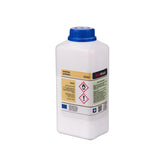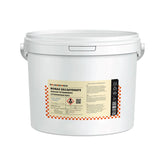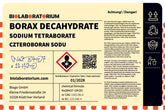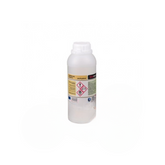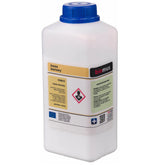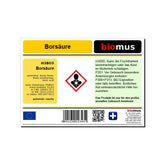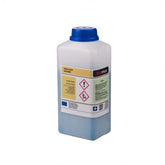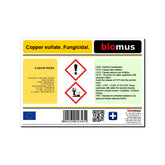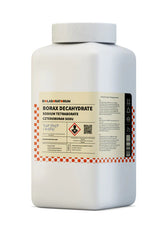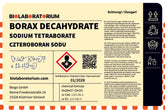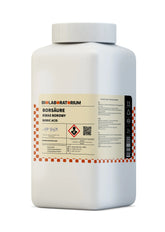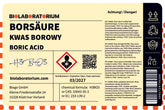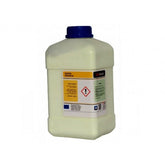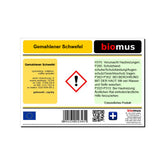Anhydrous Lithium Metaborate: Versatile Helper in Industry and Research
Anhydrous lithium metaborate, also known as lithium metaborate or LiBO2, is an important technical lithium compound with a variety of applications in different industrial sectors. In this blog post, we will take a closer look at the properties, uses, and safety aspects of this fascinating substance.
Properties of Lithium Metaborate
Lithium metaborate is a white, crystalline powder that is stable at room temperature. It is characterized by a number of interesting properties:
Chemical Composition and Structure
Lithium metaborate consists of lithium and borate salts and has the chemical formula LiBO2. At the molecular level, it forms a chain-like structure where lithium and borate groups are alternately arranged.
Thermal Stability
Lithium metaborate is thermally stable up to temperatures of about 900°C. It only begins to decompose at higher temperatures.
Melting Point
The melting point of lithium metaborate is around 845°C. Above this temperature, it transitions into a liquid phase.
Solubility
Lithium metaborate is only slightly soluble in water. It is more soluble in acids and bases.
Electrical Properties
Lithium metaborate is an insulator with high electrical resistance. Therefore, it finds application in electrical engineering and electronics.
Industrial Applications of Lithium Metaborate
Due to its versatile properties, lithium metaborate is used in a range of industrial sectors:
Glass and Ceramics Industry
Lithium metaborate serves as a flux in glass manufacturing, as it lowers the melting point of glass. Additionally, it is used in the production of specialty ceramics.
Metallurgy
In metallurgy, lithium metaborate is used as a flux in welding and soldering. It helps remove oxide layers and improve the wetting of surfaces.
Chemical Analysis
Lithium metaborate plays an important role in chemical analysis. It serves as a flux agent in sample preparation for X-ray fluorescence analysis (XRF) and other analytical methods.
Optics and Electronics
Due to its electrical insulation properties, lithium metaborate is used in optical and electronic components, for example in laser crystals or piezoelectric ceramics.
Medicine and Pharmacy
In medicine and pharmacy, lithium metaborate is used as a component of medications and dietary supplements. It also plays a role in radiation therapy.
Research and Development
Lithium metaborate is an important starting material in materials research and the development of new materials with specific properties.
Safety Aspects of Lithium Metaborate
As with all chemical substances, certain safety aspects must be considered with lithium metaborate:
Health Hazards
Lithium metaborate is non-toxic during normal handling and use. However, inhalation or ingestion of larger quantities may cause irritation.
Fire Hazard
Lithium metaborate itself is not flammable. However, when in contact with water or acids, it can lead to the formation of boric acid, which in turn can react with metals and release hydrogen gas.
Environmental Compatibility
Lithium metaborate is harmless to the environment in small quantities. However, improper disposal of larger quantities can contaminate water bodies and soils.
Overall, it can be said that lithium metaborate is a versatile and useful substance that finds broad application in industry and research. With the right safety measures, it can be used safely and effectively.
Conclusion
Anhydrous lithium metaborate is a fascinating technical lithium compound with a wide range of applications. From the glass and ceramics industry to metallurgy and chemical analysis and electronics - lithium metaborate is a true all-rounder. Due to its thermal stability, electrical insulation properties, and melting point reduction, it is an important component of many industrial processes and products.
At the same time, appropriate safety aspects must be considered when handling lithium metaborate. However, with the right precautions, this substance can be used safely and efficiently to benefit from its diverse advantages.
Overall, lithium metaborate is a fascinating example of how innovative chemistry can contribute to the development of modern technologies. Further research and development in this field will certainly yield many exciting applications.
